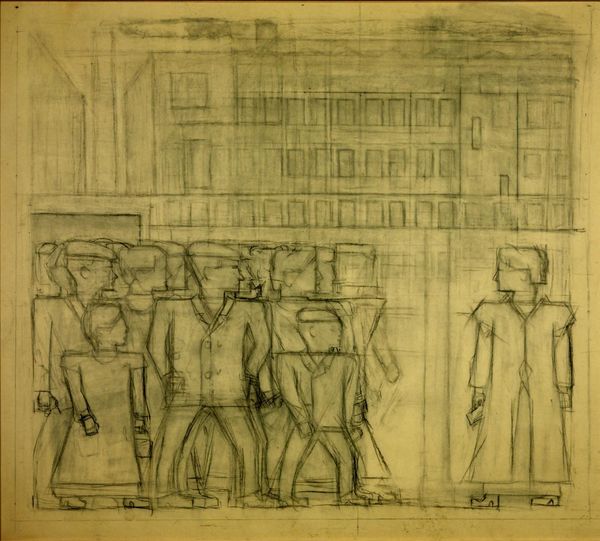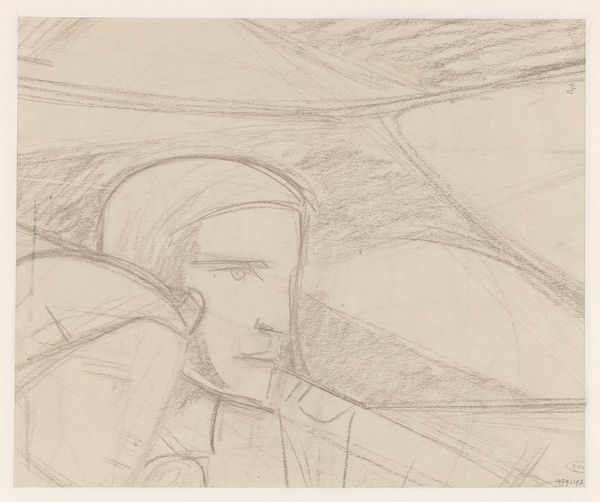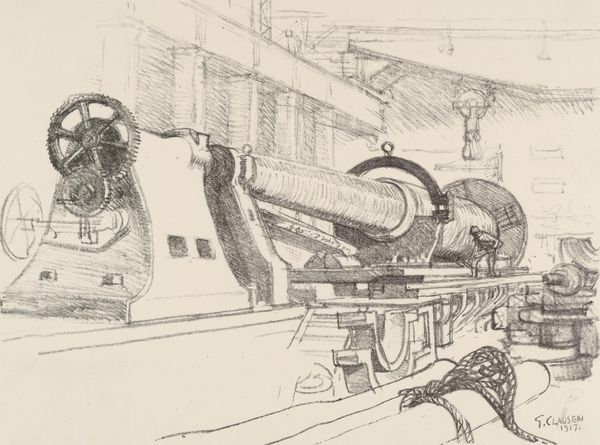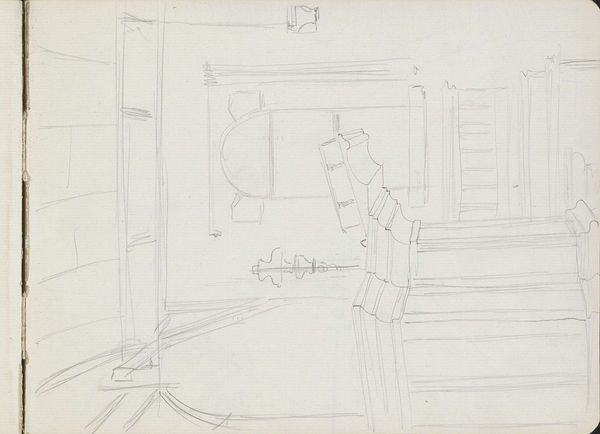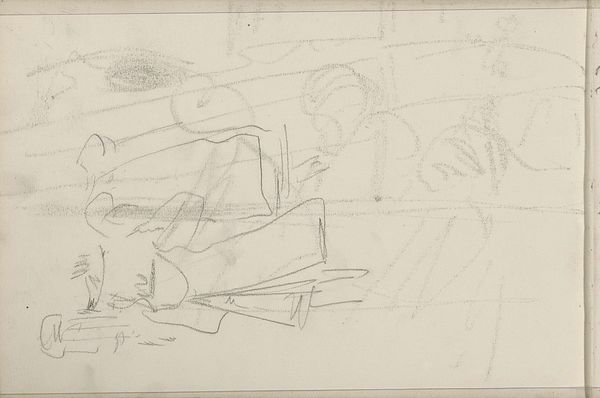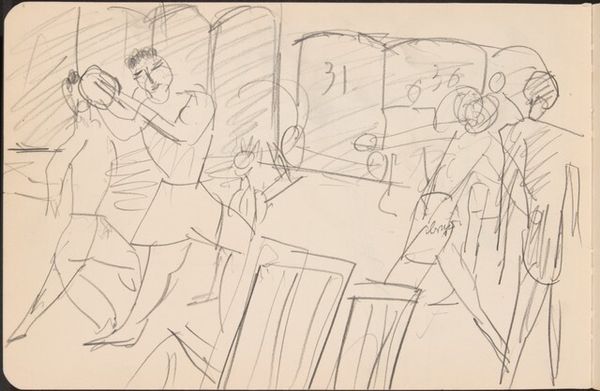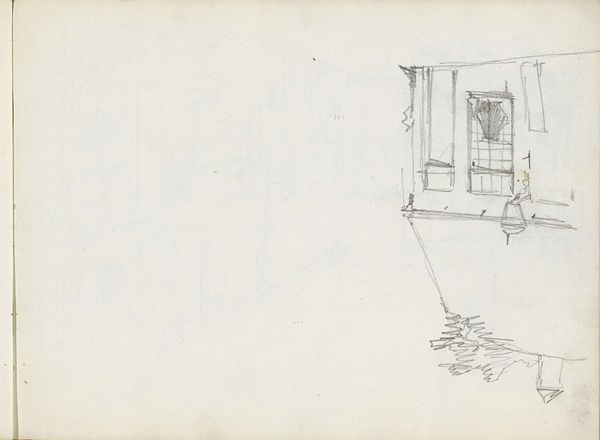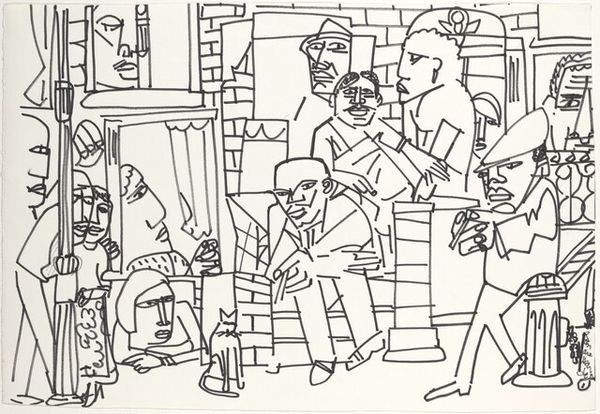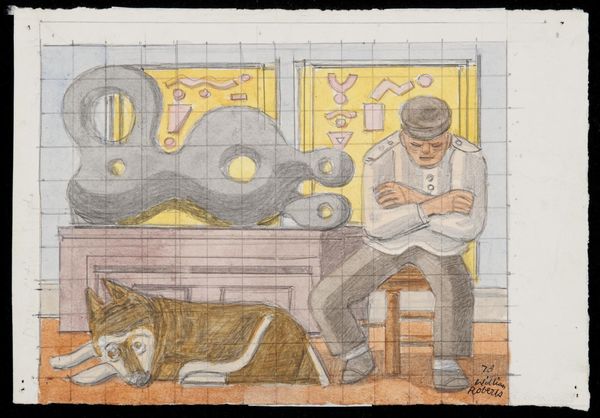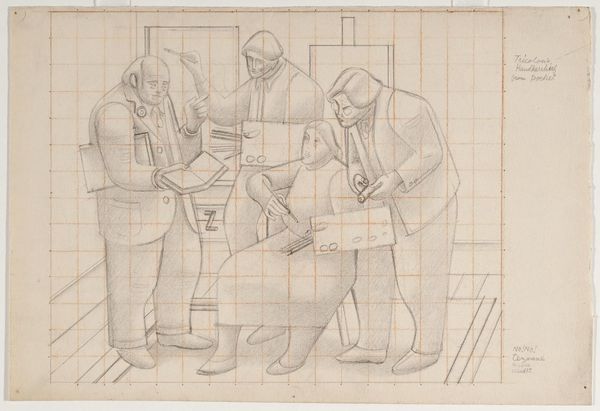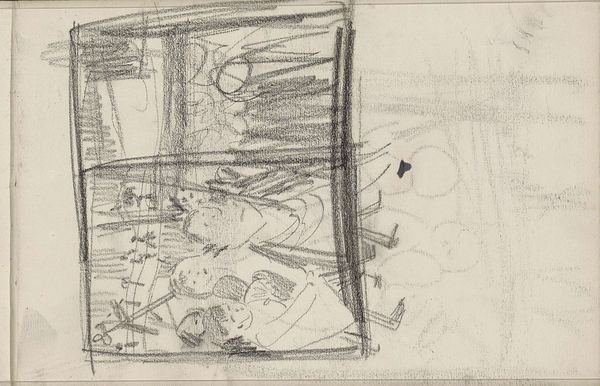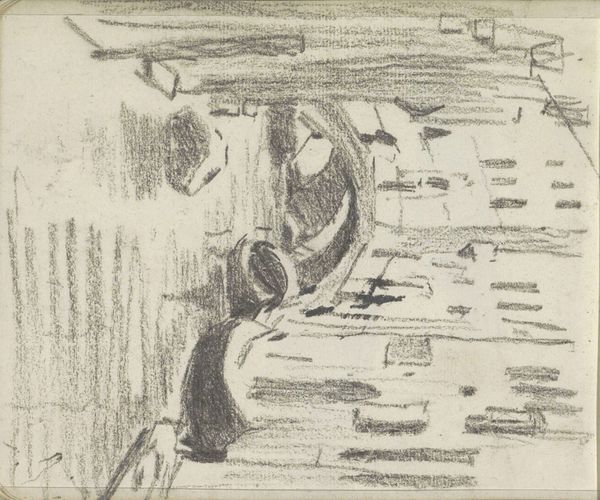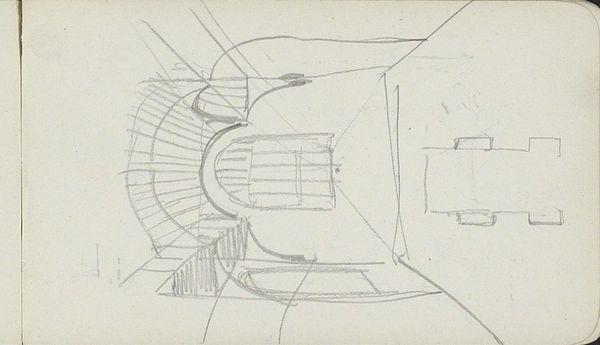
drawing, pencil
portrait
drawing
cubism
figuration
geometric
pencil
cityscape
modernism
Copyright: Modern Artists: Artvee
Editor: This is Fernand Léger’s “Deux hommes dans la ville,” created in 1923. It’s a pencil drawing, and the geometric figures against the cityscape really catch the eye. What strikes me most is the unfinished quality. What are your initial thoughts? Curator: I am immediately drawn to the overt display of the artistic process. Look at the visible grid lines beneath the figures and the cityscape. Léger isn’t concealing the means of production; he's foregrounding it. Editor: I see what you mean. It's almost like he’s inviting us to consider the labor and construction involved. Does the city setting play into that focus on the process, in your view? Curator: Absolutely. This wasn't a rural landscape. The city represented industrial production and, therefore, a new type of labor. The depiction of the men seems aligned to the representation of objects: both become geometric modules, cogs if you like, within that modern urban system. Consider, too, that drawing is a cheaper and more portable medium that would allow him to observe daily scenes as part of his practice. It connects to how it was made and for whom. Editor: So, it’s less about what they’re doing and more about where they are positioned in this system? Curator: Precisely! Léger isn’t giving us a narrative portrait; he is dissecting the relationship between the human and the industrialized environment. We could almost call it a study of material conditions and of people’s place in it. Editor: That’s a fascinating perspective. It's much more than just an image; it's an investigation of society. Curator: I find this piece exemplifies the artist’s reflection on the world as experienced through industrial production and urban development. We must consider that these pieces are made within very specific and material social structures.
Comments
No comments
Be the first to comment and join the conversation on the ultimate creative platform.
